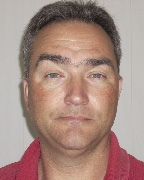Sub-slab depressurization (SSD) systems have proven to be an effective and cost- efficient approach in addressing the risks associated with radon gas intrusion in residential properties (Environmental Protection Agency (EPA), 1993). SSD systems have also been identified as an effective tool in eliminating the risks associated with vapor intrusion (VI), which results from contaminant sources, primarily volatile organic compounds (VOCs), which are present in soil, or migrate in groundwater located below adjacent and/or nearby buildings.
The concern regarding VI among state regulators has been steadily increasing, as the awareness of risks resulting from exposure to contaminants volatilizing and entering residences and buildings has increased. Where VI is a problem, air quality can be adversely impacted, resulting in increased health risks to the occupants. This concern is magnified when a release to the environment involves chlorinated solvents, such as perchloroethene (perc) from dry cleaning and/or manufacturing facilities.
Recently enacted changes in regulatory standards in 2006 and 2008 have addressed these concerns, in part by lowering the regulatory clean-up standards and goals designed to be protective of indoor air. As a result, there have been significant reductions in chlorinated VOC clean-up standards. For instance, the Mass. Department of Environmental Protection (MADEP) regulatory standard, which is protective of indoor air for the dry cleaning chemical perc, was reduced from 3,000 parts per billion (ppb) to 50 ppb in groundwater. The result of this reduction has been to increase the overall number of dry cleaning facilities, which trigger a reporting obligation from a "reportable release" when undergoing a "due diligence" environmental assessment.
Regulatory "action level" criteria for contaminants constituting a threat to the health of occupants for indoor air have also been significantly reduced in the past year. The concentration of perc in indoor air previously considered as "background" is now greater than the "action level," which constitutes a threat to the health of the occupants. These changes have brought about a dramatic increase in the need for remedial actions needed, in order to eliminate the VI pathway exposures.
SSD systems have increasingly become the technology of choice to address a VI problem, because they are effective in reducing up to 99.9% of chlorinated solvent contamination in indoor air (Folkes, 2002), can be installed at a modest cost into pre-existing buildings (a $2,000 system is usually sufficient for a residence), has low operational costs (typically a 90 to 150 watt fan), and an operational lifespan of 5 to 15 years for the fan motors, which are easily replaced when they wear out. These systems are also very similar to those utilized for treating radon gas problems. The systems can be installed unobtrusively, and do not generate any noise within the occupied spaces. A "U-tube" manometer displaying a differential in the water column is the only indication that the system is operating. The fans are mounted on the exterior of the building where the decreased noise levels do not pose a problem to the occupants.
Norfolk Ram Group, LLC recently installed a two part SSD system at an office building located in Medford, Mass. The system was placed down-gradient of a former dry cleaner facility where perc had migrated into the groundwater located beneath the building. Perc vapors were detected in the indoor air, at levels which exceeded the DEP Imminent Hazard criteria. The SSD system was installed over a period of several days at a cost of $10,000, and depressurized an area of approximately 4,500 s/f. Post installation indoor air samples have demonstrated a reduction of perc in indoor air below laboratory detection limits. In one area, perc concentrations were reduced from 18.8 µg/m3, which exceeded an "Imminent Hazard" action level, to below laboratory detection limits (< 3.4 µg/m3). The SSD system is anticipated to run continuously for many years, with reasonable electrical consumption costs, and with minimal required maintenance.
In short, SSD systems can be a highly effective, cost-efficient approach to addressing VI problems. By freeing up resources to address the releases, SSD systems allow engineers to continue to work towards long-term solutions to these problems.
Charles Young is an associate at Norfolk Ram Group, LLC, Milford, Mass.
Tags:
Sub-slab depressurization (SSD) - An effective technology in eliminating hazardous vapor intrusion
March 04, 2009 - Owners Developers & Managers
 (1).png)








